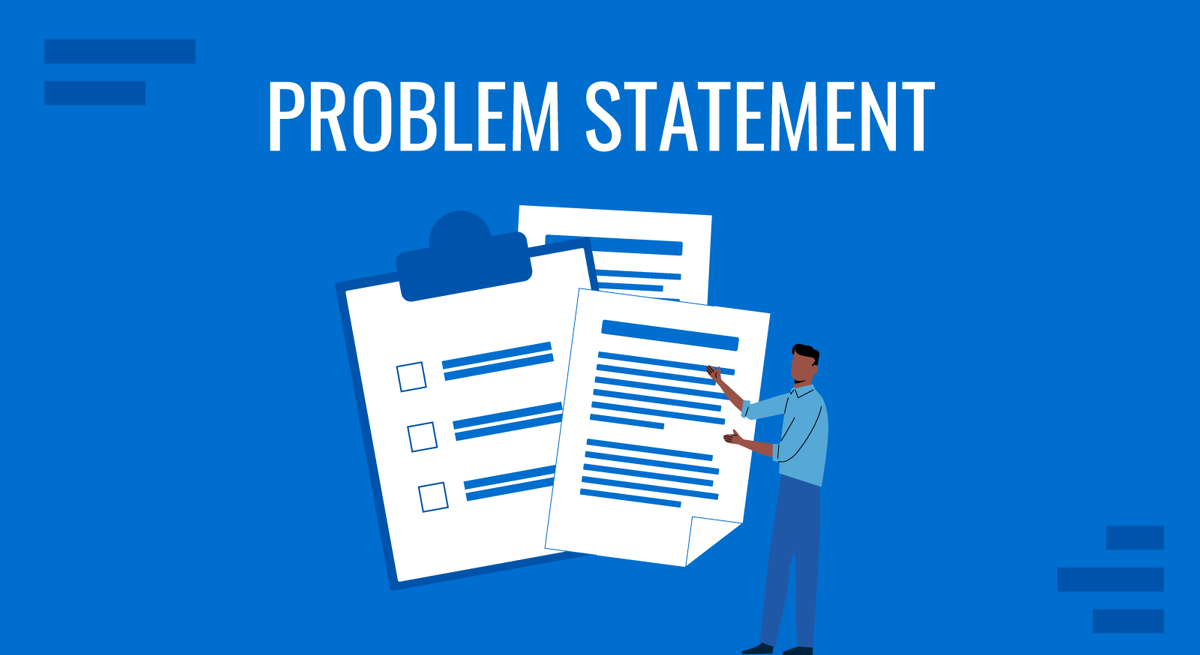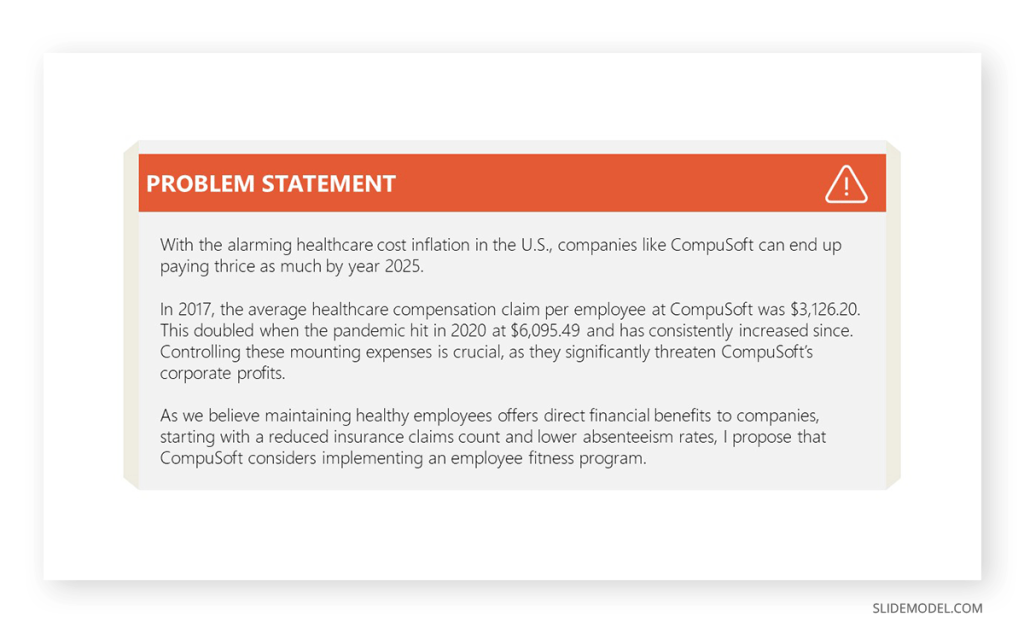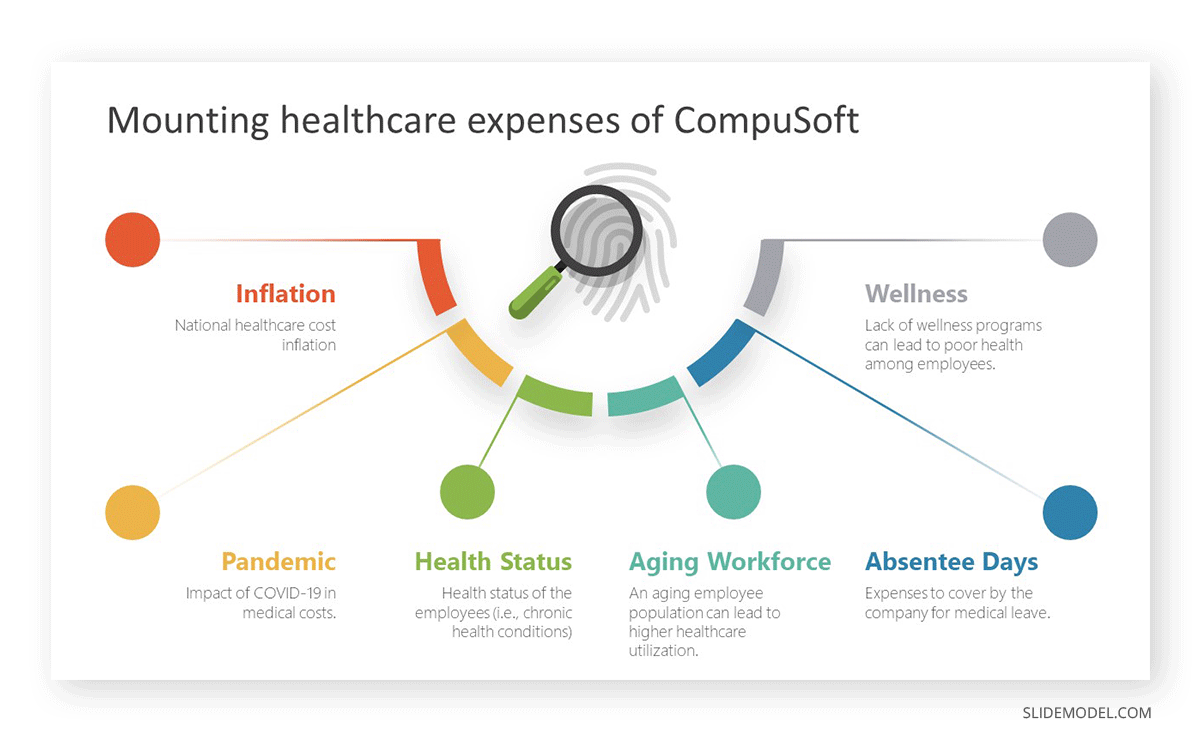
When trying to call an audience to action, it is easy to become fixated on coming up with unassailable arguments and bulletproof evidence. Yet, crafting a compelling problem statement is the first step to getting your proposals heard and acknowledged.
In this post, you’ll get a lowdown on how to write an effective problem statement.
Table of Contents
- What is a Problem Statement?
- When Should You Write a Problem Statement
- How to Write a Problem Statement
- Common Mistakes to Avoid when Writing a Problem Statement
- Conclusion
What Is a Problem Statement?
A problem statement is a concise and clear description of the issues or challenges that must be addressed. The main objective of this problem-solving strategy is to establish a common ground with your audience about the existence of a problem before moving to more delicate matters, which is the solution. More importantly, it helps garner support from decision-makers, team members, or funding bodies by presenting a compelling case for why the problem needs attention and resources.
A good problem statement should:
- Provide a concise explanation of the specific issue, leaving no room for ambiguity
- Explain why the problem is significant and requires immediate attention
- Highlight the discrepancy or gap between the current state and the desired state.
When Should You Write a Problem Statement
Crafting a problem statement is often the first step when writing a project proposal to show stakeholders you are solving a realistic problem. A problem statement is also an effective hook when starting a presentation and getting your audience to lean in.
Whether in written documents, presentations, or team discussions, a well-crafted problem statement can be a compelling hook that draws your audience in and paves the way for successful outcomes.
How to Write a Problem Statement
When writing a problem statement, it’s good to have a structure to follow. It helps to articulate the issue, define its scope, and guide the reader’s understanding of the problem. Below are the elements you would want to include in your problem statement.
- Background or context of the problem
- The specific issue being addressed
- The consequences of not solving the problem
- Brief background of the solution (Optional)
Let’s look at a problem statement example for an internal project proposal to test our recipe.

The problem of Healthcare Cost at CompuSoft
Corporate healthcare cost inflation in the U.S. is rising at an alarming rate. The U.S. Department of Health and Human Services recently estimated that medical claims in the country would triple by the year 2025. Such a surge in healthcare expenses poses a formidable challenge for companies like CompuSoft.
In 2017, the average healthcare compensation claim per employee at CompuSoft was $3,136.20. This doubled when the pandemic hit in 2020 at $6,095.49 and has consistently increased since. Controlling these mounting expenses is crucial, as they significantly threaten CompuSoft’s corporate profits.
Maintaining healthy employees offers direct financial benefits to companies, including reduced insurance claims and lower absenteeism rates. I propose that CompuSoft consider implementing an employee fitness program to address this issue.
Step 1. Providing a Background of the Problem
The problem statement should begin with the big picture of the issue and then narrow it down to the specific problem. In the example above, the writer started by providing the context of the problem, which is the rising corporate healthcare cost in the US, with a statement from the health services bureau. This way, the audience understands the extent of the problem and validates the solutions the presenter may propose.
Step 2. Articulating Specific Issue Being Addressed
In the second paragraph, the writer brings the discussion closer to home by focusing on the impact of rising healthcare costs on CompuSoft. This localized approach personalizes the issue and makes it more relatable to the reader, as it directly affects a specific company they can relate to.
The concrete figures quantify the problem and make it more tangible. They add a sense of immediacy and relevance, capturing the reader’s attention and underscoring the significance of the problem for the company’s well-being.
Step 3. Identifying Risks of Not Solving the Problem
This part of the problem statement may be the final blow you need to bring the stakeholders on board with you. When they understand the potential negative consequences and risks of not addressing the problem, they are more likely to recognize the urgency of finding a solution and actively participate in the resolution process.
This statement should be explained concisely – preferably in a one-liner. In the example above, the writer briefly mentioned how escalating healthcare costs could erode the company’s profits.
Step 4. Providing a Background to the Solution
Finally, you should discuss potential solutions that may be implemented. The purpose is to introduce the general approach to solving the problem. This background information serves as a teaser, prompting further discussion with stakeholders.
In the example, the presenter briefly mentioned “implementing an employee fitness program” but did not discuss the specific approach to take. Whether the solution is to build an in-house fitness center or provide fitness-club membership is a topic that should be discussed in the body of the proposal.
Common Mistakes to Avoid when Writing a Problem Statement
1. Being too Vague or Broad
A vague or broad problem statement defeats why you are writing it in the first place – that is, to orient your audience to the significance of your proposal. Vague problem definition lacks insights and often leads to unsuccessful proposals. The broad problem statement, on the other hand, lacks scope and tries to solve multiple problems, diluting the effectiveness of the proposed solution.
You can avoid this mistake by quantifying the problem with concrete figures and focusing on one central issue. A single, specific problem can be more easily measured and evaluated to determine the effectiveness of the solutions.
Example:
Bad Problem Statement: The company’s healthcare claim cost is so high. We need to lower the claims, improve the wellness of employees, and increase our profit.
Improved Problem Statement: The company’s average healthcare claim cost per employee has increased by 50% from $3,136.20 in 2021 to $4704.3 in 2022. We need a wellness program that will help decrease the growth rate to 10% this year.
2. Failing to Identify the Root Cause of the Problem
The best approach to resolving any issue begins by analyzing the situation from its foundational elements and gradually working toward a solution. This method allows for a thorough understanding of the problem and its underlying causes. When you fail to identify the root cause of the problem in the problem statement, you are likely to propose an inadequate solution that doesn’t address the core issue.
The Root Cause Analysis (RCA) Diagram is a critical tool in this process. A problem-solving method credited to Sakichi Toyoda, RCA helps find the underlying problem by visually mapping out the potential contributing factors or categories influencing the issue.

Problem: Mounting healthcare expenses of CompuSoft
Causes: national healthcare cost inflation, the impact of COVID-19, the health status of the employees, age of the employees, medical pay for absentee days, and wellness of the employees.
Our fictitious problem statement above pinpointed several causes of the mounting healthcare expenses of CompuSoft, such as (1.) the national healthcare cost inflation, (2.) the impact of COVID-19, (3.) the health status of the employees, and (4.) the absence of fitness programs for employees. While the first two root causes may be external and beyond the direct control of CompuSoft, the organization can still focus on addressing the latter causes to control corporate healthcare costs.
3. Focusing on Symptoms Instead of the Problem Itself
What would you do if you broke your bone? You’d probably take a pain reliever to ease the pain, right? You need to see a doctor and get a cast to heal your injury properly. This is a classic example of differentiating symptoms.
In the workplace, not tackling the underlying problem can result in recurrent issues and an inefficient allocation of resources.
In our example, CompuSoft can switch to a health insurance partner that offers the best deal, but that will only provide temporary relief by reducing immediate healthcare expenses. Encouraging wellness programs and prioritizing employee health is a more comprehensive and sustainable solution.
4. Using Biased or Subjective Language
This needs no lengthy explanation. Biased language may not accurately reflect the facts or reality of the problem. This reinforces the objectivity of the problem statement.
Conclusion
A well-crafted problem statement provides a clear direction for proposal development and increases the odds of gaining buy-in from stakeholders. If, in the end, the audience rejects your solution, at least you leave them convinced of the problem’s existence and that something needs to be done. That’s a win on your part!


